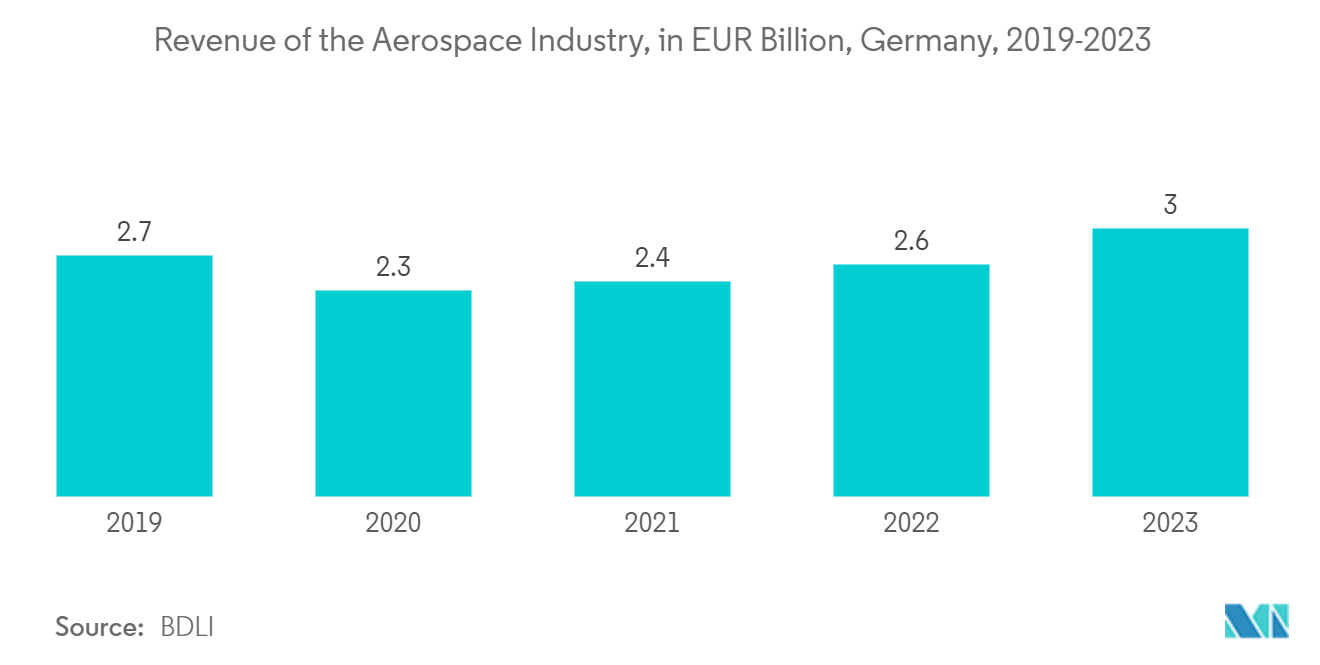Market Trends of Germany Additive Manufacturing Industry
Metals are Expected to Observe a Considerable Growth
- As semiconductor manufacturing gains traction, metal additive manufacturing (AM) is poised to play a pivotal role in the industry. Its applications span crafting heat sinks and managing thermal dynamics to producing custom tooling, fixtures, microwave, and RF components, facilitating prototyping and testing.
- Given that semiconductor devices produce considerable heat, effective thermal management becomes paramount. Metal AM stands out by enabling the design and creation of intricate heat sinks and cooling structures precisely tailored to meet specific needs. Additionally, semiconductor manufacturing often demands custom fixtures and tooling. With metal additive manufacturing, these components can be produced swiftly, slashing lead times and enhancing flexibility.
- As sectors like aerospace, medical, and automotive expand, the allure of metal AM intensifies. For example, data from BDLI highlighted that the German aerospace sector raked in approximately EUR 3 billion last year, marking a revenue uptick from its previous year. This growth trajectory has been relatively consistent. Emerging sectors, notably electric vehicles, renewable energy, and commercial spaceflight, are increasingly leveraging the designs and materials that additive manufacturing offers.
- Germany's ambitious climate neutrality target by 2045 is not just an environmental commitment but a beacon for metal AM enterprises, signaling lucrative business prospects. The transformative potential of additive manufacturing lies in its ability to produce lightweight components, minimize waste, streamline supply chains, and hasten market entry. Some AM techniques even champion the use of entirely reusable green materials. Furthermore, collaborations across industries and advancements in digital design can bolster sustainable development objectives, while adept value chain management can mitigate the industry's carbon footprint.

Automotive Segment Expected to Hold Significant Market Share
- Germany's automotive sector stands as the nation's cornerstone industry. Dominating as Europe's foremost market and producer, it also emerges as a global export titan and a beacon of mobility innovation. According to VDA, Germany produced approximately 4.12 million vehicles last year, marking a notable rise from the 3.4 million cars produced the previous year. While production figures have seen fluctuations over the years, they reached their zenith in 2011. The German automobile industry not only bolsters the nation's economy but also commands a significant presence on the global economic stage.
- GTAI reports that Germany ranks among the world's top producers of premium vehicles. Virtually all manufacturers, whether based in Germany or operating from its soil, have either rolled out or plan to introduce products catering to the premium segment. Leveraging its rich automotive manufacturing heritage, Germany is poised to cement its status as a premier global automotive hub.
- In this thriving automotive landscape, as the era of electric vehicles dawns, global competition intensifies. With sustainability taking center stage, the challenge of producing high-quality vehicles profitably looms large. Automotive manufacturers now grapple with the intricate balance of efficiency, lean production, cost management, sustainability, and agile design processes—all critical facets demanding meticulous attention.
- Consequently, manufacturers are turning to technologies like additive manufacturing. This technology aids in striking a balance among various factors while ensuring products meet stringent quality standards. Additive manufacturing emerges as a pivotal tool, continually evolving and reshaping the automotive manufacturing landscape. Its advantages are manifold: rapid prototyping, enhanced designs, customized printed components, boosted efficiency, and the use of lightweight materials.


